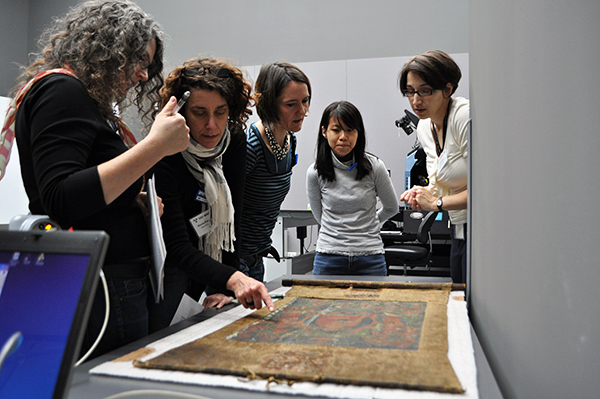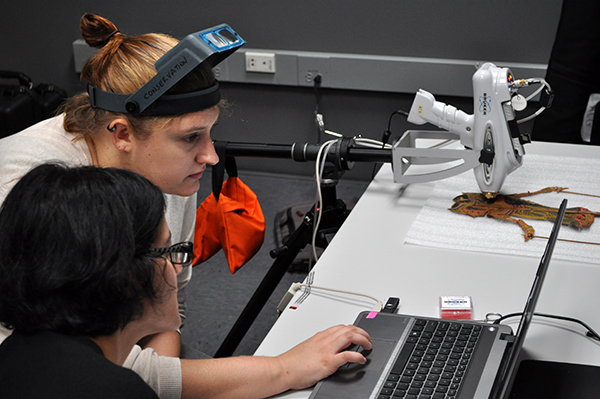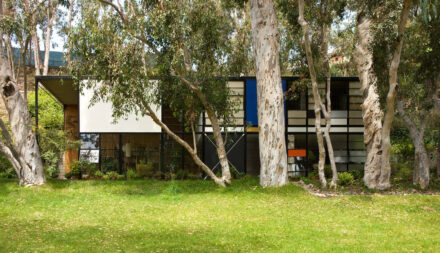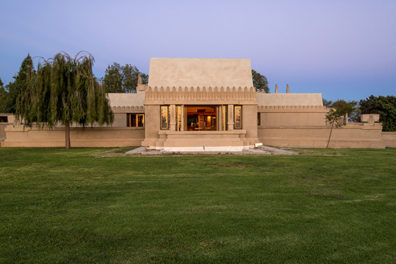Conservators flex their analytical muscles as they learn to use this scientific tool to study and understand art and cultural heritage collections
I recently returned from an intensive four-day boot camp in New Haven co-organized with the Yale Institute for the Preservation of Cultural Heritage. But don’t picture me doing crunches and push-ups. This was boot camp for conservators, and our focus was X-ray fluorescence spectrometry—XRF for short. This analytical technique provides information about material composition without physically removing a sample from the object, always a plus when dealing with treasured works of art.

Using an open-architecture XRF unit to analyze the metal composition of a bronze sculpture by François Girardon, Pluto Abducting Proserpine (1693–1710), in the collection of the J. Paul Getty Museum
XRF is widely used in industry and manufacturing, from quality control assessment to identifying different types of scrap metals. It made its first appearance in the museum world in the hands of a conservation scientist, who was using a handheld XRF unit, at the Museum of Modern Art in 2000. In recent years, as handheld XRF instruments became more affordable and easy to use, many museums and cultural institutions have acquired these portable units. Conservation scientists have been meeting periodically to discuss ways to optimize and standardize the use of this important technique.

Smaller handheld XRF units can be set up on a tripod for extra stability. Here XRF analysis is performed on a plate of Cardinal d’Amboise by photographer Nicéphore Niépce, from the Royal Photographic Society collection at the National Media Museum, Bradford, UK
Previously the exclusive domain of conservation scientists, XRF has increasingly become an important tool for conservators. Handheld units can be used like a point-and-shoot camera, with the resulting scientific data (elemental spectra that suggest what the material is) obtained in a short amount of time. However, works of art are frequently complex or are composed of composite structures, and special consideration must be given to the interpretation of the XRF results. For this reason, the Getty Conservation Institute, in collaboration with the Yale Institute for the Preservation of Cultural Heritage, organized a focused workshop on the fundamentals of XRF and data interpretation for conservators.

Aniko Bezur (far right), director of scientific research at the Yale Center of Conservation and Preservation, working with Boot Camp participants.
In November we held the first XRF Boot Camp for conservators who work at institutions without a conservation scientist on staff or with only limited access to one. We had participants from across the globe, including Singapore, Qatar, Japan, Norway, and Ireland, as well as the United States.

Boot Camp participants use XRF to analyze the material composition of panels from The Title Makers, an oil painting series by Alfred Jensen in the collection of the Yale University Art Gallery. Foreground: To Aim and Excel; background: Lost, Entanglement and Survival, both 1959, 77 x 42 in.
After four days of lectures, lab practicals and group projects using objects from the Yale University Art Gallery and the Yale Peabody Museum, the participants came away with a well-grounded understanding of how XRF works. One of the important learning experiences was following the scientific process, including setting up and preparing for analysis of a specific type of object, defining the questions, and determining if other complementary analytical techniques may be needed to answer those questions. For example, conservators are often asked if there is lead or arsenic in some ethnographic materials. XRF can tell you whether they are present, but not what the toxicity levels may be. You would need complementary analysis to answer these types of questions.

Examining data collected on day 3 of the XRF Boot Camp.
By the end of XRF Boot Camp it was very rewarding to see the transformation of the participants as they developed a stronger understanding of the data—moving from “What does this mean?” to “I know what it is telling me.” We were inspired by the learning that took place over those four days and are exploring the possibility of repeating the XRF Boot Camp for Conservators in the future.




I have a 19th C oil painting on canvas that has another painting underneath and am looking for a facility to x-ray my painting. After months of research into this painting, I believe it is by an important artist. My home is in the SanFrancisco area and I plan to visit your museum in the spring. Would you be interested in x-raying my painting or can you recommend another facility?